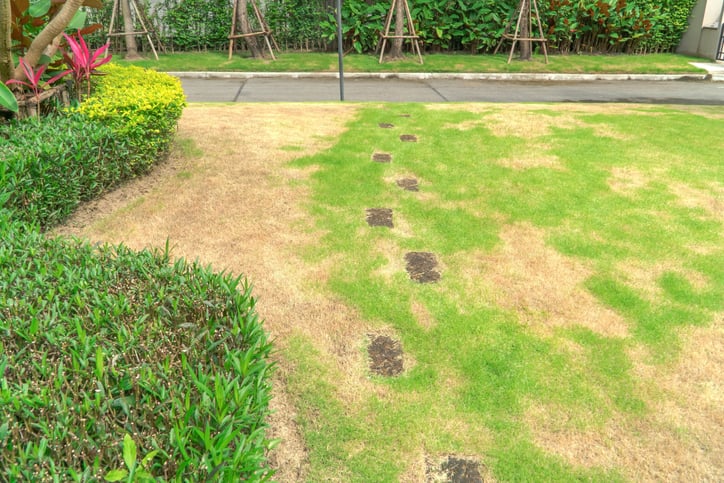The hot summer months are here, the time for backyard barbecues and pool parties. But June is a month that you will want to keep an eye out for subtle changes in your yard. Lawn diseases like dollar spot fungus, red thread and necrotic ring spot may start appearing. You'll want to recognize and respond to these changes quickly so that extensive damage does not occur.
For this blog, we’re going to focus solely on necrotic ring spot. The meaning of necrotic is affected with, characterized by, or producing the death of a usually localized area of living tissue. Necrosis essentially means death.
So, let’s take a closer look at this turf-killing disease. We’ll find out what it looks like, but more importantly, how you can prevent it from destroying your lawn.
What Causes Necrotic Ring Spot?
It typically forms in the cooler parts of the country (like Michigan) and loves cool-season grasses like Kentucky bluegrass. It’s the root-infecting fungus Ophiosphaerella korrae that causes it. I spreads through the soil and attacks your grass from the bottom up.
Optimal Temperature For Growth
The fungus achieves maximum growth at temperatures between 68° and 82° Fahrenheit. This just happens to be the average high and low temperatures in Michigan this time of year.
That’s why the necrotic ring spot typically appears in late May/early June. Environmental stress, like a drought, may also be to blame. The spots may form in the summer, disappear, and then reappear in the fall.
What Does Ring Spot Look Like?
The first symptoms of necrotic ring spot are small, light green areas of grass. These areas will get larger and under drought conditions can go beyond 2-3 feet.
You may also notice the rings getting bigger as time goes on. That’s because it will develop in the same area the following year. It will just be larger in diameter.
How To Treat Necrotic Ring Spot
Lawn fertilization is very important. Maintaining proper amounts of all of the primary nutrients reduces disease activity.
Your best bet to beat ring spot is preventing it. But if you’re dealing with a current outbreak you can speed up recovery time by amending your soil with sulfur. You’ll need a higher concentration if the disease is severe.
Lush Lawn Offers Ring Spot Treatments
Lush Lawn treats necrotic ring spot in a comprehensive manner. We’ll assess the severity of damage and decide which tailor-made treatment is right for your lawn.
If you’re interested in learning more about how we treat necrotic ring spot or any other lawn diseases, contact Lush Lawn today.
